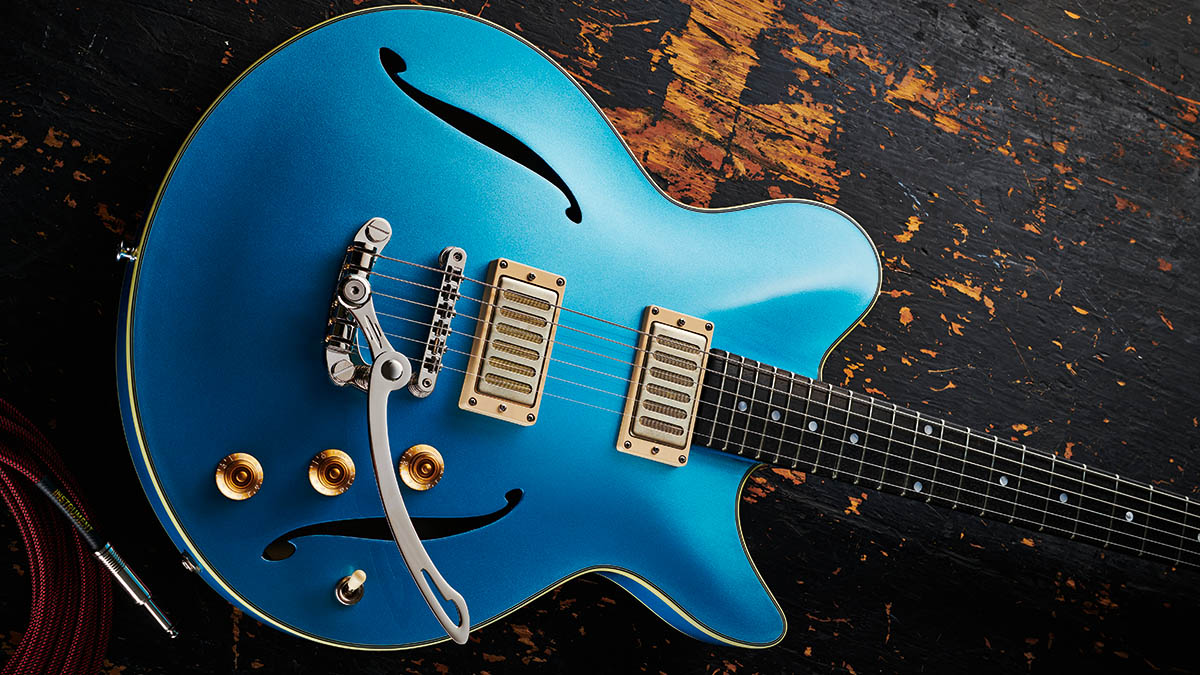Guitar World Verdict
This LA version not only slashes its price by around 25 per cent, it stretches out with a broader tonality that takes off from that first model and embraces pretty much anything you want, from rockabilly to much dirtier alt-rock, Americana and both old-style and more modern country. As an example of Eastman’s new original-only designs, it’s going to be a tough one to beat.
Pros
- +
Very hard to fault in terms of design, construction, playability and sound.
- +
We might like this even more than the original Romeo.
Cons
- -
Only offered in one colour.
- -
No lefties.
- -
Not really for players who need high-position comfort.
You can trust Guitar World
Eastman’s Romeo is one of the most beguiling guitars we’ve had on test for some time. It’s very much in style for a brand that has really brought the ‘jazz archtop’ into the modern age, a downsized and very functional thinline that is designed to feel more like a regular solidbody strapped on or seated with its almost Tele-inspired upper body.
Powered by Lollar Imperials, it sounded as regal – and surprisingly versatile – as it looked when we reviewed it. It doesn’t surprise us to learn that the Romeo, introduced in the summer of 2019, has been Eastman’s best-selling electric guitar for the past year.
However, at around the $/£2k, not least due to its carved solid spruce top, Gotoh hardware and those Lollars, it’s hardly an impulse purchase. The good news here, then, is that this new-for-2021 Romeo LA cuts $/£500 off the cost: the solid spruce top of the original model is replaced by laminate spruce, pressed and not carved; and the back and sides remain laminated mahogany.
But if the older Romeo – and its limited-edition SC partner – came across as a little conservative in their single traditional sunburst finishes, the LA’s metallic bright blue hue is stage-aimed and shakes off its jazz-age past.
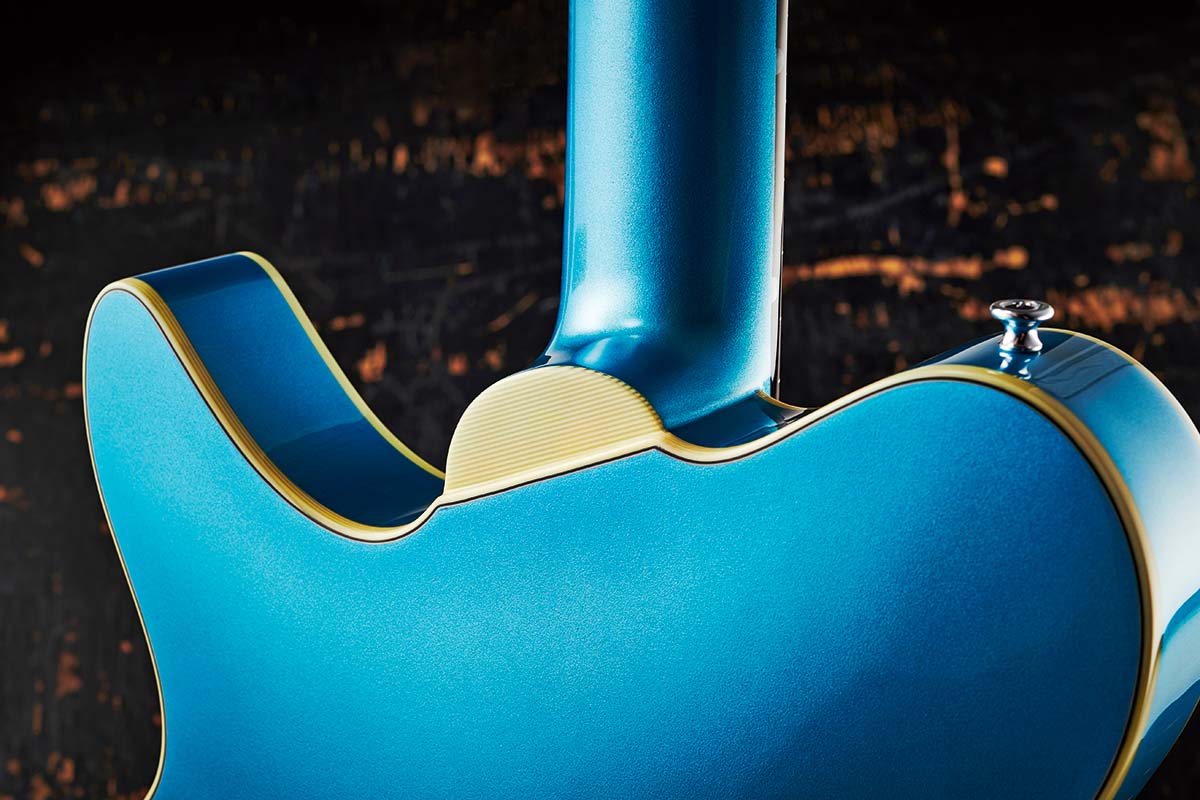
With the exception of the ink black ebony fingerboard, you can’t see any other wood unless you peer through the delicate f-holes. Here, we see a pretty traditional thinline construction with kerfed linings connecting the sides with the top and back, plus there’s a sizeable solid mahogany block under the bridge area connecting the top to the back.
Then there is some kerfed spruce reinforcement between the pickup cavities, just like the original model, although that was a part of its carved solid top. Overall, it’s pretty tidy.
To be critical, the edges of those f-holes are a little scrappy and the paintwork looks a little untidy by the neck on the treble side of the body. But the edge-scraping is very clean, revealing the nicely grained cream plastic, especially noticeable on the heel cap and the inner striped purfling lines. The striking colour sets off the shiny nickel hardware, those gold top-hat knobs and the very retro-looking gold-foil ‘radiator’ pickup covers.
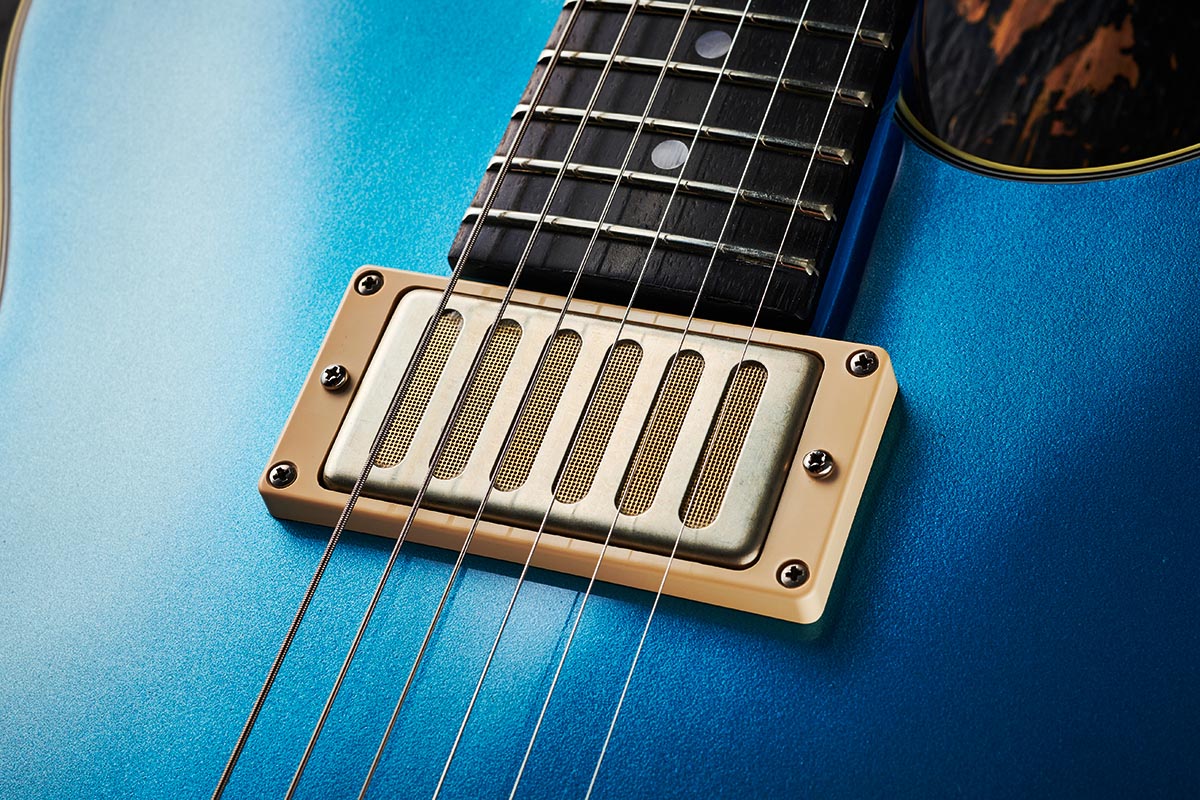
Another change here is the hardware, which switches from Gotoh to Göldo, the German-based parts side of Duesenberg. And, yes, that vibrato is what many of us know as the Duesenberg Les Trem II, which is a clever retrofit for a stud tailpiece.
While the base of the design appears identical, it’s the arm that’s different here, more Bigsby-like in terms of its attachment rather than the large knurled metal fixing of the standard Les Trem that allows the circular arm to be slightly adjusted then screwed in place with a small Allen key bolt.
The bridge is by Göldo, too, and locks to the threaded rod posts on the bass side only, and as you depress the vibrato the bridge lightly rocks. The tuners are stamped Göldo Deluxe and have rear locks, which are probably unnecessary on a light-travel vibrato such as this, but they certainly speed up string changes. And you’ll be pleased to know this system is a lot easier to restring than a Bigsby.
Those custom pickup covers hide a pair of Seymour Duncan Phat Cats, “true single-coil P-90 soapbars retrofitted under a humbucker cover for use in humbucker-equipped guitars”, says Seymour Duncan. It means that, unlike a standard P-90, we don’t have any polepiece height adjustment.
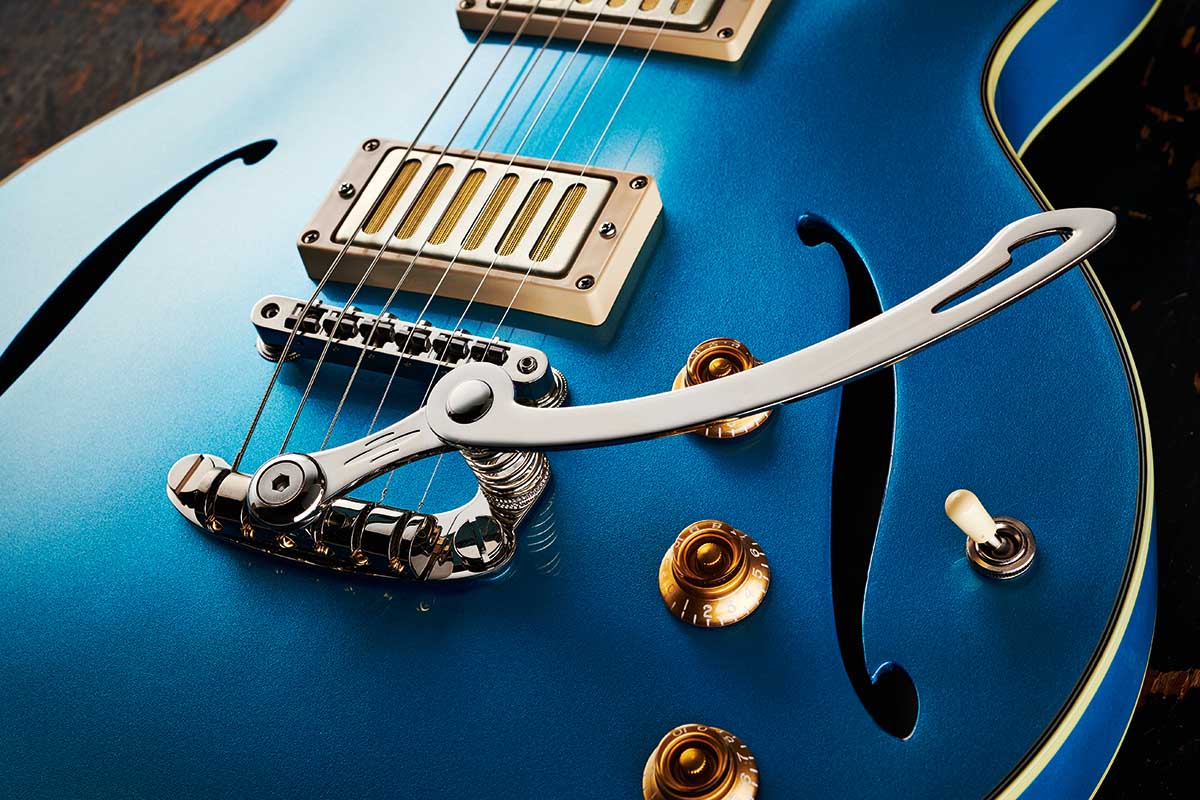
Feel & Sounds
Originally created by Eastman’s LA-based designer Otto D’Ambrosio to present a more comfortable archtop, Romeo measures 375mm (14.75 inches) across its lower bouts, while retaining a shorter 629mm (24.75-inch) scale, a sort of halfway house between a 406mm (16-inch) wide Gibson ES-335 and smaller semis such as Duesenberg’s 340mm (13.38-inch) wide Starplayer.
Body depth at the rim is 44.5mm (1.75 inches), which rises at the centre due to the curved top and back to just over 70mm. Obviously, these changes really do create a more comfortable semi, particularly when played seated. The top-fret access is a little compromised by the shape of the treble cutaway, although the heel is angled and really nicely carved.
Strapped on, Romeo is probably even more comfortable with none of the bulk of the larger ES-335 style. It’s beautifully light in weight, but still feels ‘centred’ and balanced.
The neck suits its heritage, too, with a broad width, generous string spacing at the nut (37.5mm) and a fulsome depth of 22.2mm at the 1st fret, which only rises slightly to 23.2mm by the 12th fret. Its profile is described as a ‘Traditional C’ and that pretty much sums it up. Combined with the polished ebony fingerboard with its 305mm (12-inch) radius and medium gauge Jescar frets (which are very well installed), the fingerboard edges in-turn and are lightly rolled: it’s just very good craft.
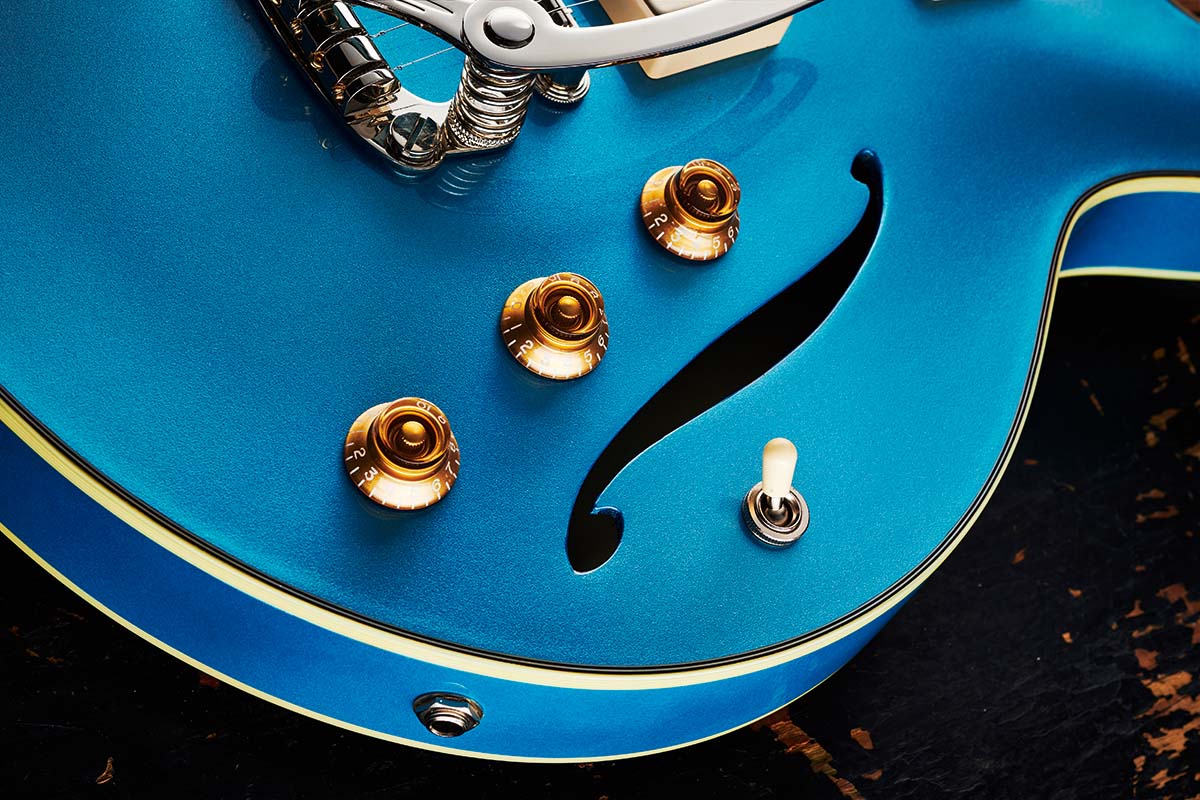
While the guitar’s construction, not least the switch from solid to laminate top, plays a part, what we hear is very definitely single coil in character with a crisp, snappy attack that does a pretty good slightly hollowed ‘Strat’ at the neck, while there’s quite a PAF-y bite and honk at the bridge. The mix (the only hum-cancelling position) is glorious Gretsch/Fender-y bounce that’s perfect for clean jangle.
The new control layout really works well, too. The bridge-only tone control tames a little of the attack for a slightly older-sounding blues voice – a real gem, actually – and it works very well to slightly soften the dual-pickup mix.
It’s interesting to compare this guitar with other semis, and while we didn’t have a standard Romeo, listening to Guild’s larger Starfire II thinline (with retrofitted Les Trem and its mini-humbuckers rewound by Radioshop Pickups), it has a little more depth to the voice with a smoother attack that’s still very much in the jazz/blues world. There’s more clarity with Romeo LA, certainly at the neck and on the mix, that would suit anyone with rockabilly leanings.
As we edge up the gain and volume, here’s a guitar that loves some grit; both bridge and neck are superb with clarity and depth in equal measure, while pulling the volumes back cleans and slightly sweetens the voice.
Then there’s the vibrato, which feels really quite like a Bigsby. The bone nut is exceptionally well cut and, once new strings were stretched, the tuning stability was extremely good. Hard to put down.
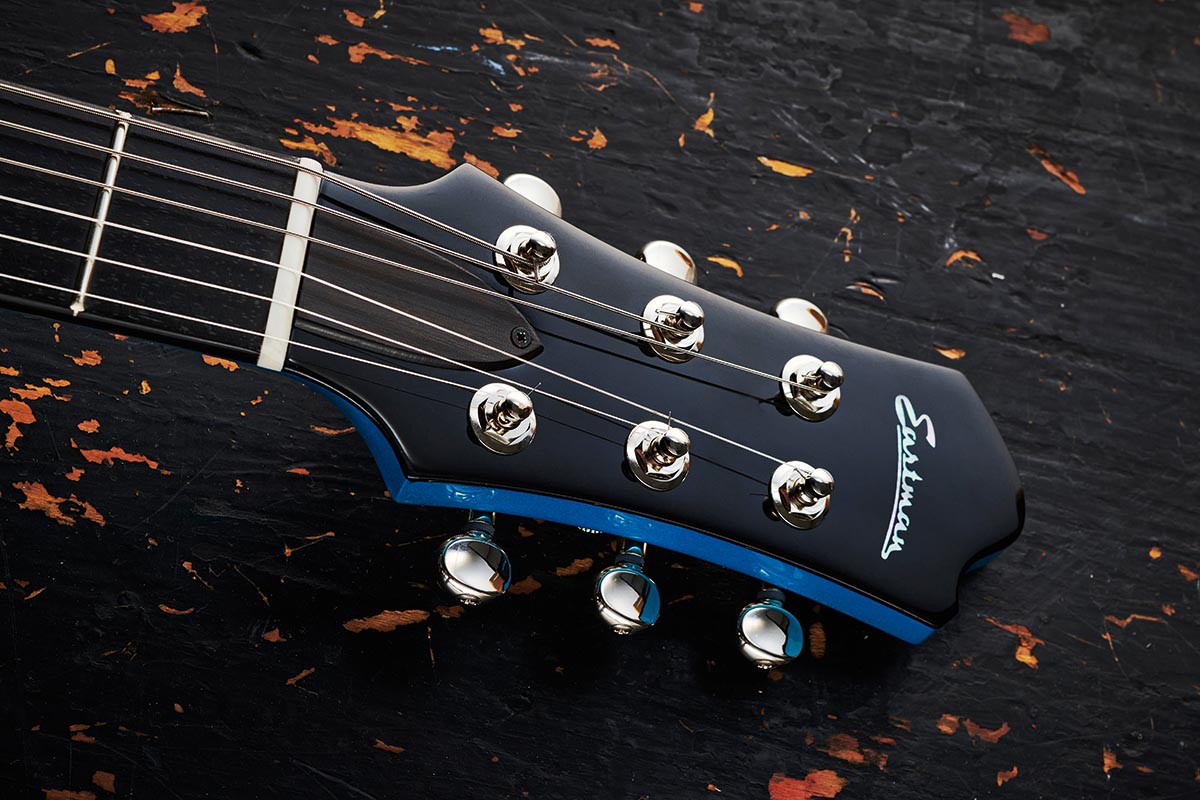
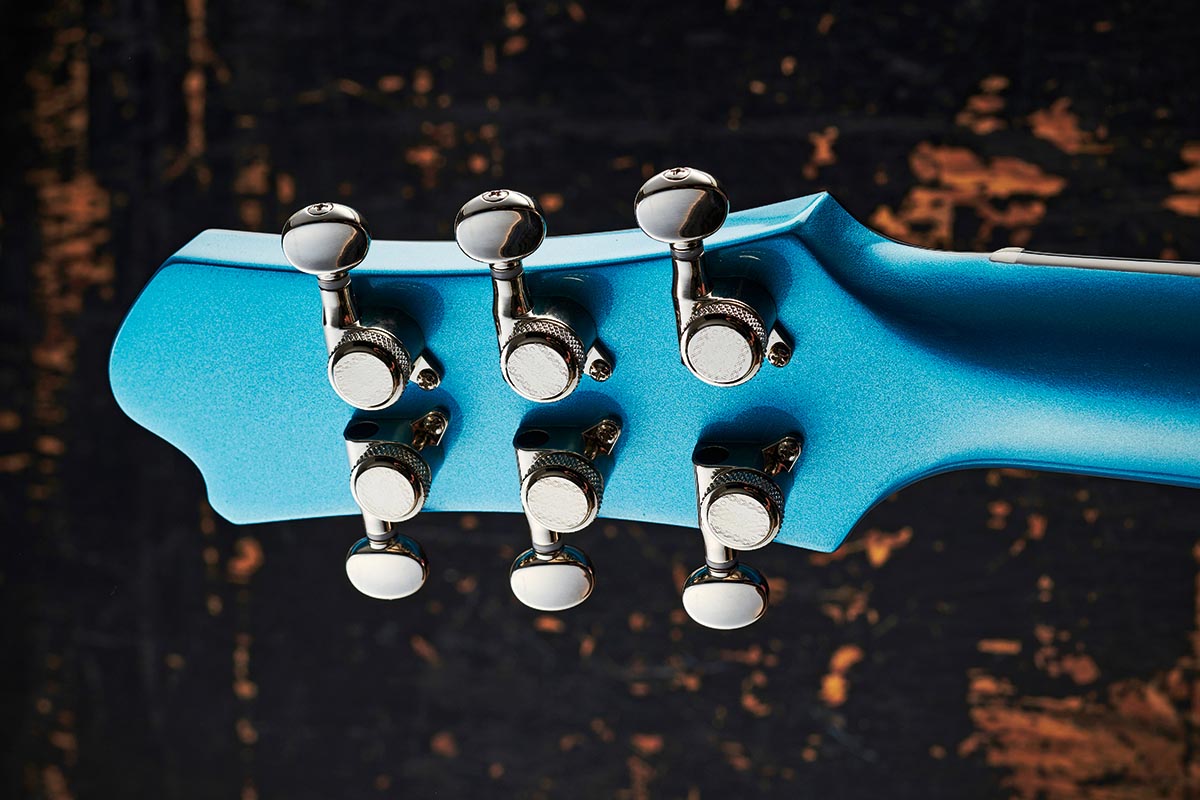
Verdict
There’s going to be some serious sibling rivalry here. The original Romeo is a fine guitar, not least if you live in a jazzier, bluesier world. This LA version, however, not only slashes its price by around 25 per cent, it stretches out with a broader tonality that takes off from that first model and embraces pretty much anything you want, from rockabilly to much dirtier alt-rock, Americana and both old-style and more modern country.
It’s very lively and responsive, too, and like the original model is lightweight but hangs on a strap really well and is surprisingly resistant to feedback at stage levels. The compact feel, of course, remains – likewise, the excellent and very traditional craft. As an example of Eastman’s new original-only designs, it’s going to be a tough one to beat, especially in this LA guise. Superb.
Specifications
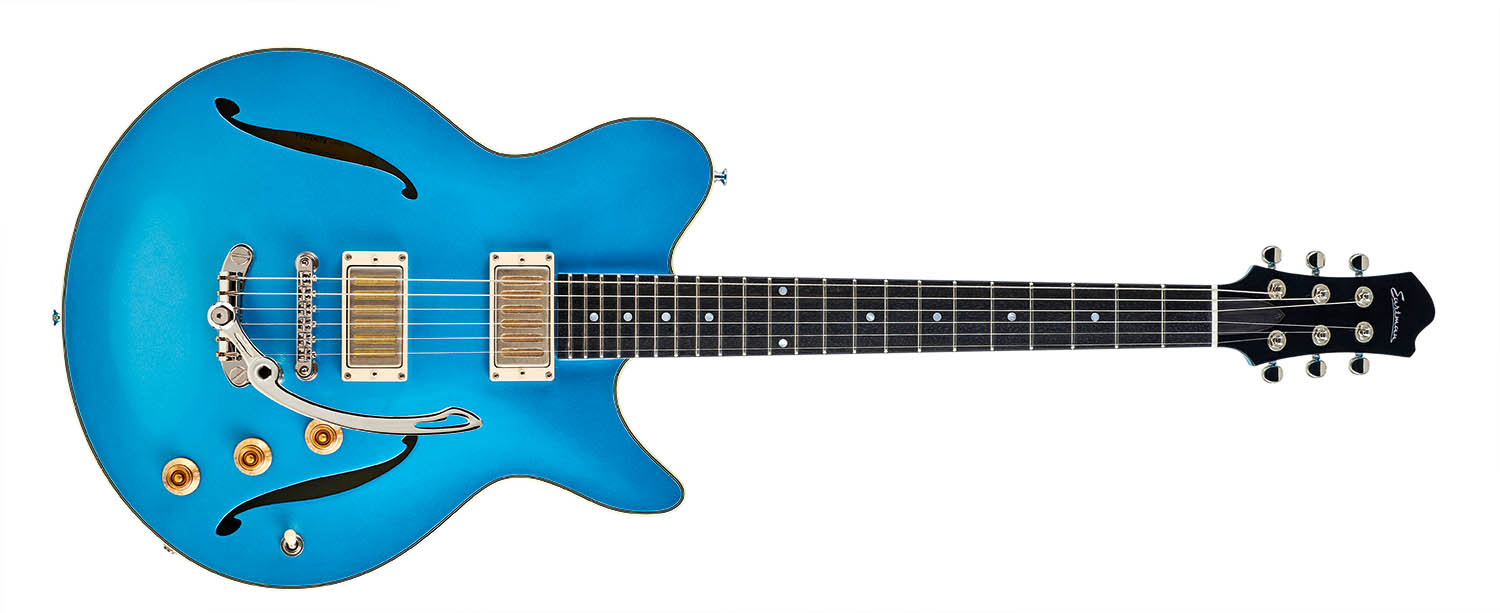
- PRICE: $1,399 street / £1,499 (inc case)
- ORIGIN: China
- TYPE: Single-cutaway thinline semi-hollowbody
- BODY: Spruce laminate top with mahogany laminate back and sides
- NECK: Maple, ‘traditional even C’ profile
- SCALE LENGTH: 629mm (24.75”)
- NUT/WIDTH: Bone/44.65mm
- FINGERBOARD: Ebony, pearl dot inlays (with half circle pearl side markers), 305mm (12”) radius
- FRETS: 22, medium/jumbo (Jescar FW47104)
- HARDWARE: Göldo vibrato (TLT2N), with Göldo 3-Point-Vario ‘tunamatic’ bridge (HW2GN) and Göldo rear-lock tuners (MGDBL33N)
- STRING SPACING, BRIDGE: 52mm
- ELECTRICS: 2x Seymour Duncan Radiator Phat Cat P-90 single coils, 3-way toggle pickup selector, individual pickup volume controls, tone control for bridge pickup only WEIGHT ˜kg/lb°: 2.82/6.2
- RANGE OPTIONS: Original Romeo (£1,999) features a solid spruce top and Lollar Custom Wound Imperial humbuckers; Romeo-SC (£1,950) swaps Lollar pickups for a Seymour Duncan Tele-style Vintage Stack at neck and full-size ’59 at bridge
- LEFT˛HANDERS: No
- FINISH: Celestine Blue metallic (as reviewed) – Truetone gloss
- CONTACT: Eastman Guitars

Dave Burrluck is one of the world’s most experienced guitar journalists, who started writing back in the '80s for International Musician and Recording World, co-founded The Guitar Magazine and has been the Gear Reviews Editor of Guitarist magazine for the past two decades. Along the way, Dave has been the sole author of The PRS Guitar Book and The Player's Guide to Guitar Maintenance as well as contributing to numerous other books on the electric guitar. Dave is an active gigging and recording musician and still finds time to make, repair and mod guitars, not least for Guitarist’s The Mod Squad.
“It holds its own purely as a playable guitar. It’s really cool for the traveling musician – you can bring it on a flight and it fits beneath the seat”: Why Steve Stevens put his name to a foldable guitar
“Finely tuned instruments with effortless playability and one of the best vibratos there is”: PRS Standard 24 Satin and S2 Standard 24 Satin review
